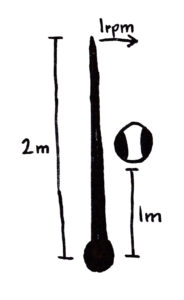This challenge involves orbits.
A geostationary orbit is one where the satellite stays in the same position relative to the ground. This works because the earth spins; the velocity that keeps it over the same spot increases while the velocity needed to orbit decreases. At some point, they intersect. All geostationary orbits must be at the equator, and have the same altitude althroughout. If you wanted to get a satellite into geostationary orbit around a planet with mass of 5,000 yottagrams that completes 1 revolution every 20 hours, how fast would your orbital speed be at apoapsis? The apoapsis is the highest point in an orbit.


